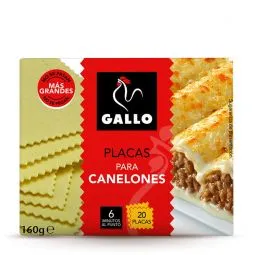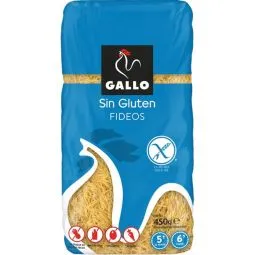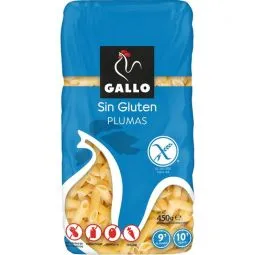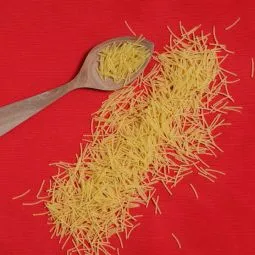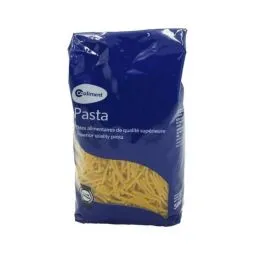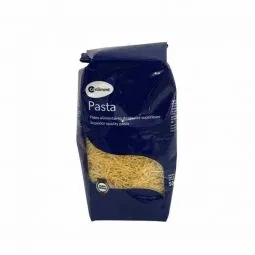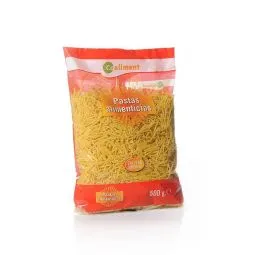SPANISH PASTA AND SPANISH NOODLE SHOP
Find in our online shop, the ideal noodles and pasta for your Spanish dishes, soups, stews and much more.
OFFER OF SPANISH PASTA AND SPANISH NOODLES
See moreUse our advanced search
- -10%
- -10%
Alphabet Pasta Gallo
- -10%
- -10%
Gallo Gluten Free Fideos
- -10%
- -10%
Gallo Gluten Free Macaroni
Noodles Gallo Nº 2
Noodles For Fideua Fine
Noodles Nº 0
Noodles Nº 2
1. How much pasta should you use per serving of soup?
The right amount of pasta per serving in soup is key to achieving a balanced and satisfying dish. Generally, it’s recommended to use about 30 to 50 grams (around 1 to 1.75 ounces) of dry pasta per person when making soup. This range ensures that the pasta complements the broth without overpowering it or making the soup too thick.
Why this amount? Pasta absorbs water and expands as it cooks, roughly doubling or even tripling in size depending on the shape and type. Using too much pasta can turn your soup into a heavy, dense dish that loses the lightness and flavor complexity of the broth. On the other hand, too little pasta might make the soup feel thin or lacking substance.
The pasta shape also matters: small shapes like orzo, ditalini, or tiny shells tend to be used in slightly larger quantities because they take up less space, while larger or tubular pastas should be used more sparingly. If you’re making the soup as a main course, lean towards the higher end of the amount; for a starter or lighter soup, stick to the lower end.
Remember that personal preferences and appetite sizes can vary, so adjusting the quantity accordingly is always a good idea.
2. What mistakes should you avoid when making soup with pasta?
Making soup with pasta might seem straightforward, but there are common pitfalls that can affect texture, flavor, and overall enjoyment. Here are the key mistakes to avoid:
1. Adding pasta too early
One of the biggest errors is cooking the pasta for the entire duration of the soup. Pasta tends to overcook and become mushy if left in hot broth too long. Overcooked pasta not only ruins texture but can also soak up too much broth, leaving the soup thick and heavy.
Tip: Add pasta near the end of cooking, just enough time for it to become tender but still firm (al dente).
2. Not adjusting the liquid volume
Since pasta absorbs water and releases starch, it can thicken your soup unexpectedly. If you don’t compensate with extra broth or water, the soup may end up too dense or gloopy.
Tip: Keep an eye on the soup’s consistency and add more broth or water if needed to maintain the desired balance.
3. Cooking pasta separately without flavor
Cooking pasta in plain water and then adding it to the soup can result in bland pasta that doesn’t carry the soup’s flavor.
Tip: Whenever possible, cook the pasta directly in the broth so it absorbs the soup’s flavors. If cooking separately, season the water generously and drain well before adding.
4. Overlooking drainage when cooking pasta separately
If you cook pasta apart, draining it poorly can add excess water to the soup, diluting flavors and changing texture.
Tip: Drain pasta thoroughly and, if possible, rinse lightly to remove excess starch, which can thicken the soup too much.
5. Forgetting to adjust seasoning after adding pasta
Pasta absorbs salt and other seasonings from the soup, which can leave the broth tasting under-seasoned.
Tip: Always taste the soup after adding and cooking the pasta and adjust seasoning accordingly before serving.
In summary, the secret to great pasta soup lies in using the right pasta quantity, adding pasta at the right time, monitoring the liquid, and fine-tuning the seasoning. Avoid these common mistakes to ensure your soup has perfect texture, rich flavor, and a balanced consistency every time.
